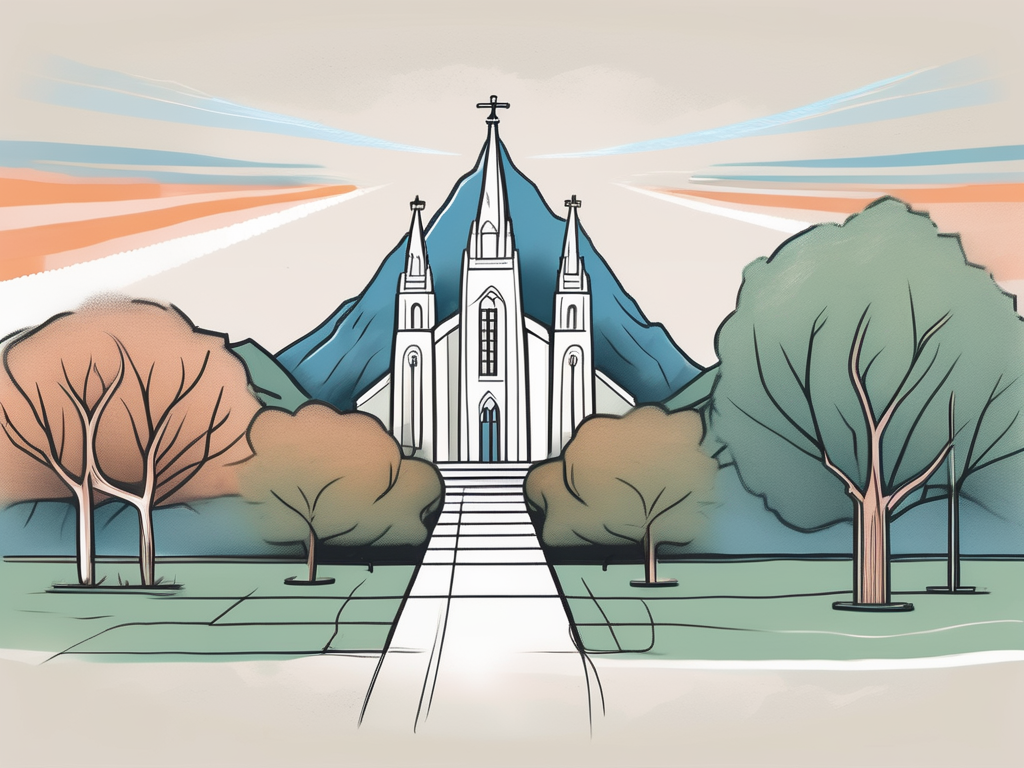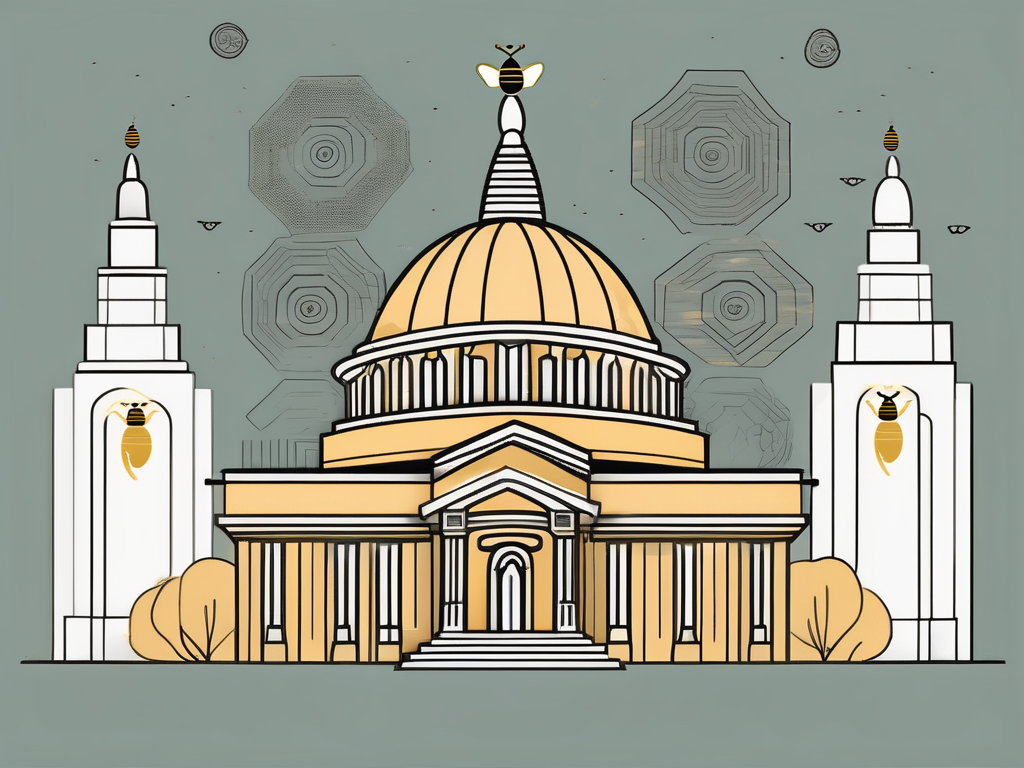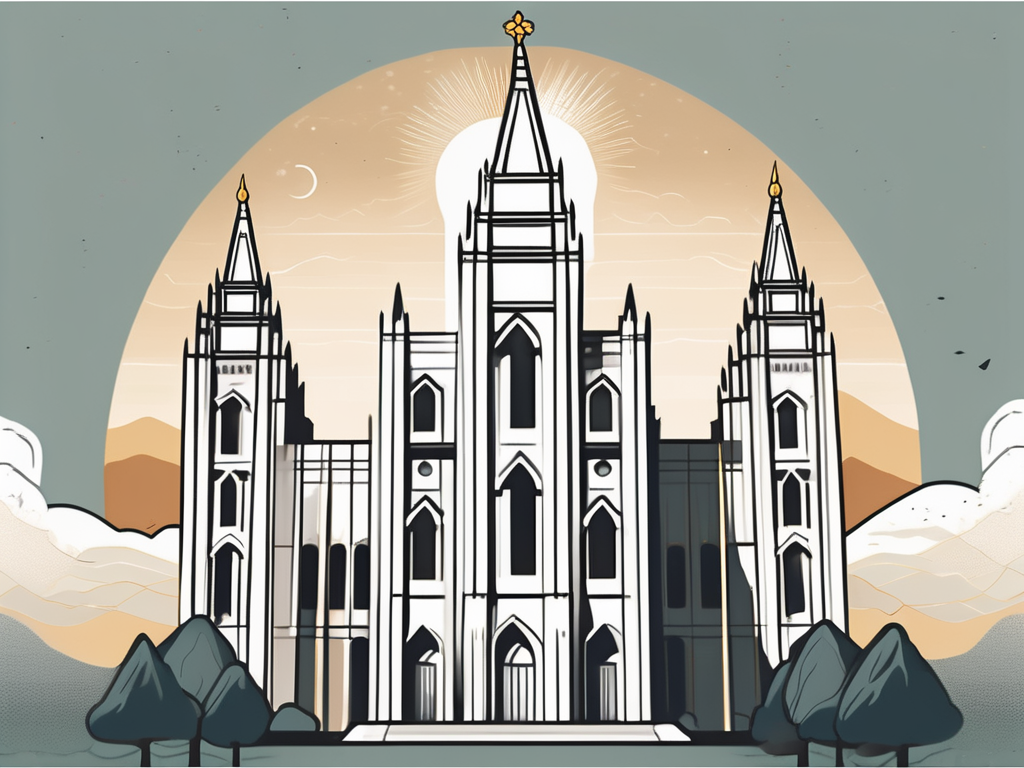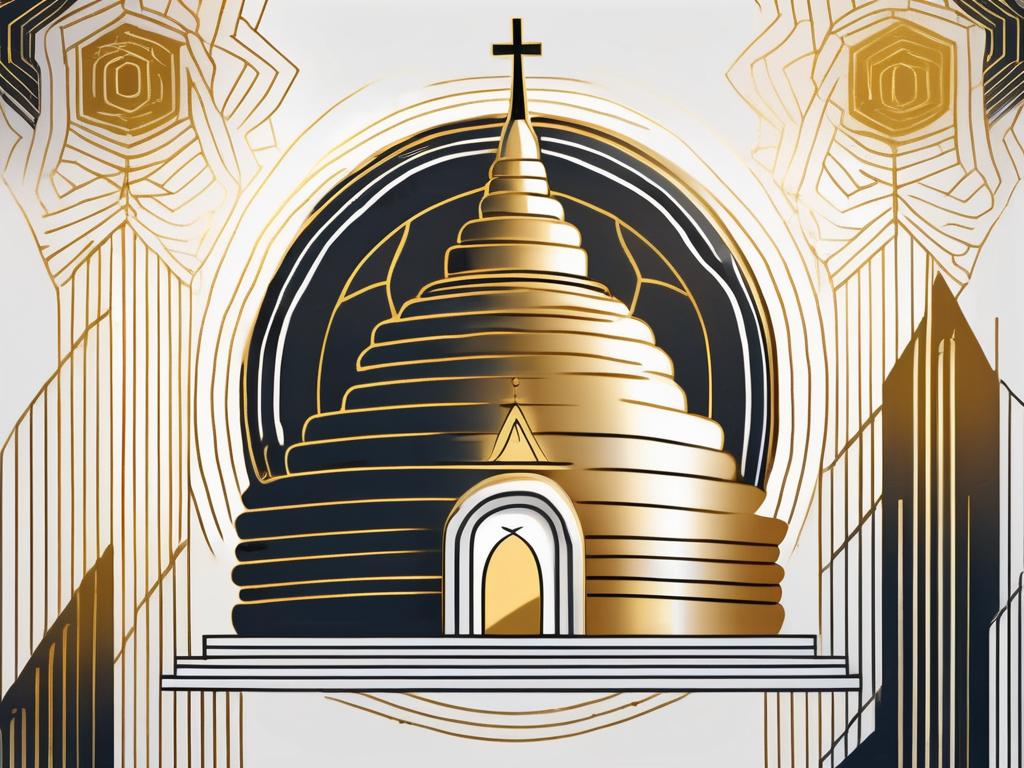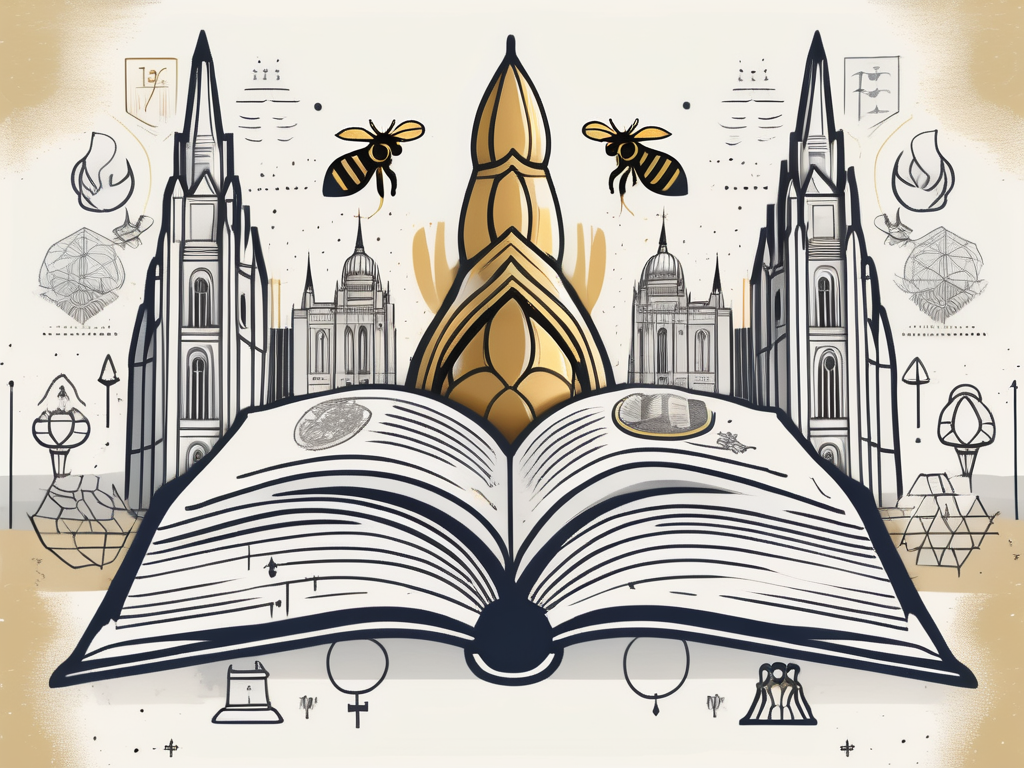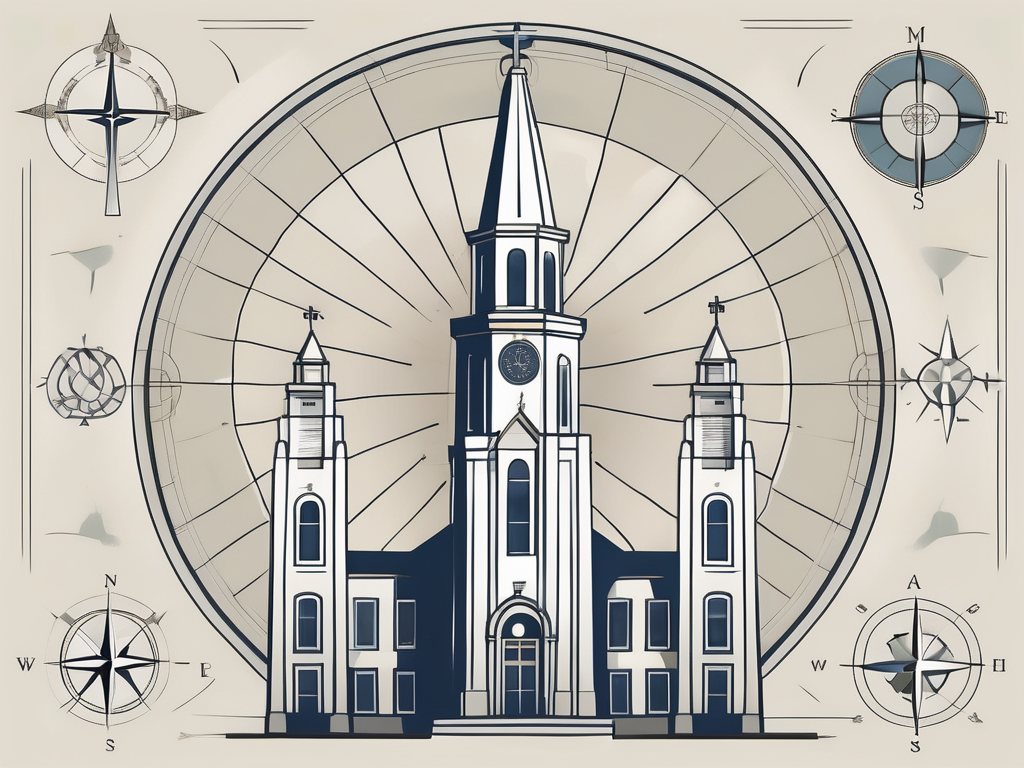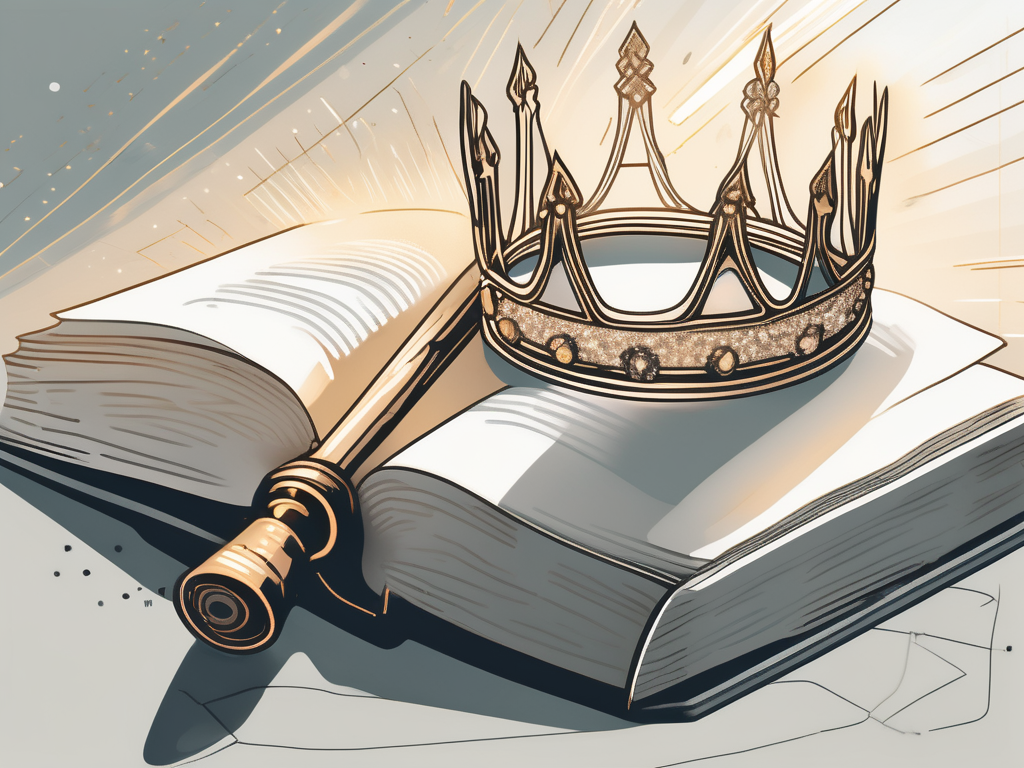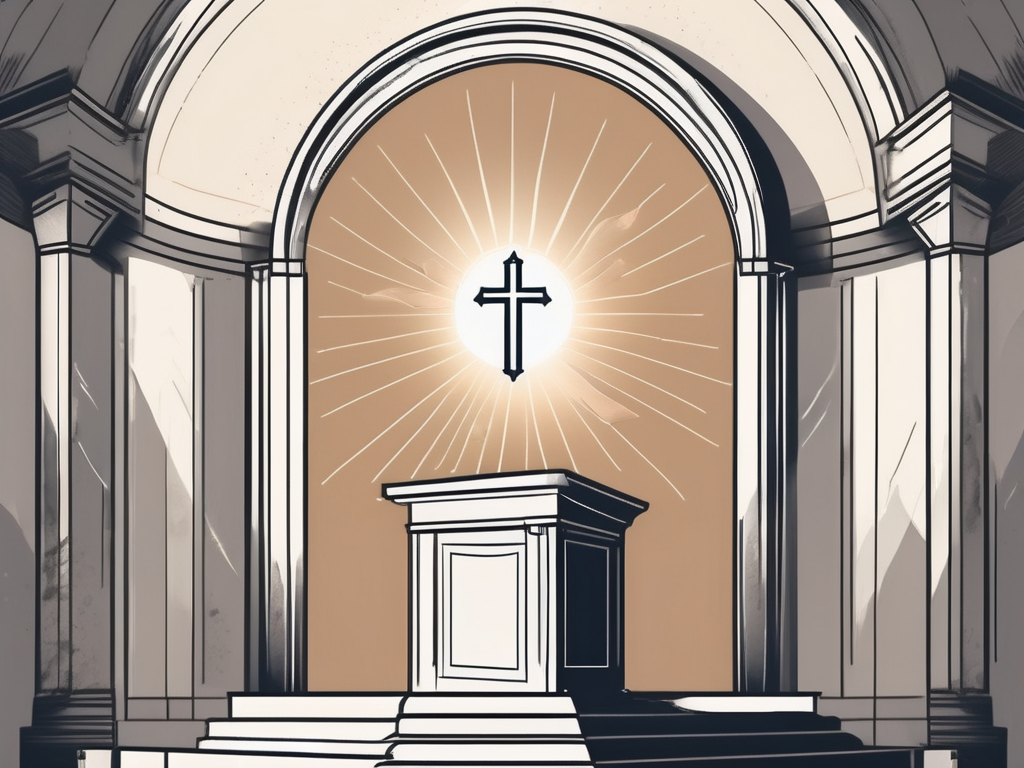The Mormon Church, officially known as The Church of Jesus Christ of Latter-Day Saints (LDS Church), has a complex hierarchy that plays a crucial role in its functioning. Understanding this hierarchy is essential for comprehending the inner workings of the church and its leadership structure. In this article, we will explore the origins of the Mormon Church, the structure of its leadership, the roles and responsibilities within the hierarchy, the role of women, the process of succession, and more.
The Origins of the Mormon Church
The Mormon Church, officially known as the Church of Jesus Christ of Latter-Day Saints, has a rich and fascinating history that dates back to the early 19th century. It all began with Joseph Smith, a young man who claimed to have had a divine visitation from God and Jesus Christ. This extraordinary encounter would set in motion a series of events that would shape the future of the church.
Joseph Smith’s divine experience occurred in the spring of 1820 when he was just 14 years old. According to his account, he went into a grove of trees near his home in Palmyra, New York, to pray for guidance on which church to join. It was during this prayer that he claimed to have seen a vision of God the Father and Jesus Christ, who told him not to join any existing church as they were all corrupt.
This pivotal moment marked the beginning of a new religious movement. Over the next decade, Joseph Smith would receive numerous revelations and visions, which he recorded in what would become known as the Book of Mormon. This sacred text, believed by members of the church to be an additional testament of Jesus Christ, would serve as the foundation of the Mormon faith.
On April 6, 1830, in Fayette, New York, Joseph Smith officially organized the Church of Jesus Christ of Latter-Day Saints. He was ordained as the first prophet and president of the church, a position he would hold until his death in 1844. This marked the formal establishment of the Mormon Church and the beginning of a remarkable journey filled with triumphs and challenges.
The early years of the church were marked by intense persecution. As word spread about Joseph Smith’s claims and the growing number of followers, opposition and hostility from various religious and societal groups increased. The members of the church faced discrimination, violence, and even legal persecution.
In the face of such adversity, the members of the church sought refuge and a place where they could freely practice their faith. This led to a mass migration westward, with the ultimate destination being the Great Salt Lake Valley in present-day Utah. Under the leadership of Brigham Young, who succeeded Joseph Smith as the second prophet, the Mormon pioneers embarked on a treacherous journey across the rugged terrain of the American West.
Brigham Young, a charismatic and visionary leader, played a crucial role in leading the church during its difficult pioneer years. His strong leadership and organizational skills helped the members establish thriving communities in the Salt Lake Valley and other parts of the region. The church’s headquarters were eventually established in Salt Lake City, where they remain to this day.
While Joseph Smith and Brigham Young are perhaps the most well-known figures in early Mormonism, there were many other individuals who played significant roles in the growth and development of the church. Sidney Rigdon, Oliver Cowdery, and Parley P. Pratt were among those who made important contributions to the early years of the Mormon Church.
As the church continued to expand and evolve, it faced new challenges and opportunities. Today, the Mormon Church has millions of members worldwide and is known for its strong emphasis on family, community, and service. Its history is a testament to the resilience and determination of its early pioneers, who overcame immense obstacles to establish a thriving and enduring religious tradition.
The Structure of the Mormon Church
The Mormon Church, also known as The Church of Jesus Christ of Latter-day Saints, is organized in a hierarchical structure that provides a clear framework for governance and leadership. This structure ensures that there are clear lines of authority and responsibility, allowing for effective decision-making and the smooth functioning of the church as a whole.
At the top of the hierarchy is the First Presidency, which consists of the church’s president and his two counselors. The president is considered the prophet, seer, and revelator, and is believed to receive direct communication from God. This divine communication is seen as essential for guiding the church and its members in accordance with God’s will.
The First Presidency holds the highest authority in the church and is responsible for the overall governance of the church. They provide guidance and direction to the entire membership and make decisions regarding church policy and doctrine. This includes matters related to tithing, temple worship, and missionary work. The First Presidency also holds the keys to the priesthood, which is central to Mormon theology and is believed to be the authority to act in God’s name.
Beneath the First Presidency is the Quorum of the Twelve Apostles, which consists of twelve individuals chosen by revelation and sustenance from the other members of the church. The apostles are considered special witnesses of Jesus Christ and play a significant role in preaching the gospel, guiding the church, and fulfilling various administrative duties.
The Quorum of the Twelve Apostles holds the second-highest authority in the church and works closely with the First Presidency in leading and directing the church. They are responsible for teaching and testifying of Jesus Christ, both within the church and to the world at large. Their role is crucial in maintaining the unity and doctrinal integrity of the church.
Further down the hierarchy are the Seventy and Stake Presidencies. The Seventy is a general authority of the church and is primarily responsible for overseeing the missionary efforts worldwide. They work closely with local leaders and members to ensure the effective spread of the gospel and the establishment of new congregations.
Stake Presidencies, on the other hand, are responsible for the administration of a specific geographical area called a stake. A stake is composed of several congregations, known as wards or branches, and is led by a stake president who is supported by two counselors. The stake presidency oversees the spiritual and temporal welfare of the members within their stake and provides guidance and support to local leaders.
Within each ward or branch, there are various other leadership positions, such as bishops, who are responsible for the spiritual and temporal well-being of the members in their congregation. These local leaders work in coordination with the higher levels of leadership to ensure the smooth functioning of the church at all levels.
The hierarchical structure of the Mormon Church provides a framework for unity, direction, and accountability. It allows for the efficient administration of the church’s programs and resources, ensuring that the needs of the members are met and that the mission of the church is carried out effectively. Through this structure, the Mormon Church strives to create a sense of belonging and purpose for its members, while also providing opportunities for growth, service, and spiritual development.
Roles and Responsibilities within the Church Hierarchy
Within the church hierarchy, each position comes with specific roles and responsibilities. Let’s explore some of the key roles in this section.
The Role of the Prophet
The prophet acts as the spokesman for God and serves as the president of the church. He has the authority to receive revelations and guide the church according to God’s will. The prophet is seen as the key figure in modern-day Mormonism and is believed to hold all the keys necessary for the governance of the church.
As the prophet, he is responsible for leading the church in spiritual matters, providing guidance and direction to its members. He is also responsible for making important decisions on behalf of the church, such as calling and releasing leaders, organizing and conducting meetings, and overseeing the administration of ordinances and sacraments.
Additionally, the prophet is tasked with the responsibility of teaching and interpreting scripture, both ancient and modern, to help the members understand and apply the principles of the gospel in their lives. He is seen as a source of inspiration and guidance, and his words are considered to be authoritative and binding.
Duties of the Apostles
The apostles assist the president in his duties and act as witnesses of Jesus Christ to the world. They hold the same priesthood authority as the prophet and bear the responsibility of spreading the gospel, guiding the church, and fulfilling various administrative duties.
As special witnesses of Jesus Christ, the apostles are called to testify of His divinity and teachings. They are tasked with proclaiming the gospel to all nations, baptizing and confirming new members, and organizing and overseeing the establishment of new congregations and branches of the church.
In addition to their missionary work, the apostles also play a crucial role in the governance of the church. They participate in councils and committees where important decisions are made, and they provide counsel and guidance to local leaders and members of the church.
The Work of the Seventy
The Seventy, as mentioned earlier, plays a vital role in the missionary efforts of the church. They supervise and support the work of individual missionaries and provide guidance and assistance in fulfilling their duties. The Seventy also assist in general church administration and participate in various councils.
There are several quorums of Seventy in the church, each with its own responsibilities and assignments. The Seventy are called to serve as special witnesses of Jesus Christ and are given the authority to preach the gospel, baptize, and administer the sacrament.
In addition to their missionary work, the Seventy also assist in the administration of the church. They serve as advisors to local leaders, provide training and support to members, and help coordinate and organize various church programs and initiatives.
Overall, the roles and responsibilities within the church hierarchy are diverse and interconnected. Each position plays a crucial part in the functioning and growth of the church, working together to fulfill its mission of spreading the gospel and bringing individuals closer to God.
The Role of Women in the Mormon Church
The hierarchy of the Mormon Church also includes a significant role for women, although it differs from the male-dominated leadership structure. Let’s take a closer look.
The Relief Society
The Relief Society is a women’s organization within the church that has been in existence since the early days of Mormonism. Its purpose is to provide support and service to its members and the community at large. The Relief Society president, along with her counselors and board, oversees the organization’s activities and promotes the welfare of women in the church.
Young Women and Primary Organizations
Besides the Relief Society, there are also organizations for young women and children called the Young Women and Primary, respectively. These organizations help guide and nurture the spiritual development of their members and provide various opportunities for growth and service.
The Process of Succession in the Mormon Church
Inevitably, the leadership of the Mormon Church undergoes transition through the process of succession. Let’s delve into this process in more detail.
The Death of a Prophet
When a prophet passes away, it triggers the succession process within the church. The president of the Quorum of the Twelve Apostles is typically next in line to become the new prophet. However, the succession is not automatic and must be approved by the members of the church in a solemn assembly, where they sustain the new president.
The Selection of a New Leader
Once the new president is sustained, the First Presidency is reorganized with the new prophet at the helm. This reorganization may also involve changes in other leadership positions, depending on the needs of the church. The new leader brings his unique perspective and guidance to the church, continuing the divine authority and direction established by Joseph Smith.
Understanding the hierarchy of the Mormon Church provides insight into the structure and function of this unique religious organization. It highlights the key figures, roles, and responsibilities within the church’s leadership and underlines the importance of women in the church’s fabric. The process of succession ensures a smooth transition of leadership and serves as a testament to the church’s continued growth and vitality.


